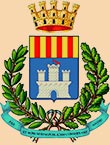Museo dell'intreccio mediterraneo di Castelsardo
Main site sections
Small containers
Baskets, small chests, small hand baskets
Most of the small and medium sized baskets are circular or oval with, in some cases, lids. They are made using the coiled structure technique with fixed or twisted stitches. The raw material used varies depending on where the artifacts are made. The fibers used to form the warp are reeds, sea hay, wheat culms (stems), and asphodel, while blades of reed, dwarf palm, asphodel and natural raffia are used for the weft. These were designed to be festive containers and are still today used on special occasions or for particular events (religious ceremonies like baptisms or weddings and other important community events).
Their main function is to contain sweets and breads, as well as infant clothing, objects and precious jewels. The decorations are rich, ornamental with geometric, phytomorphic and anthropomorphic designs, refined with small clippings of rich fabrics applied on the rim and on the internal walls. Very interesting is the particular “fretwork” technique with which the baskets are made, creating alternating spaces with solid areas to recall the mesh of a fishing net. No decorative rules are followed in the making, the dimensions and decorations depend on the taste and talent of the basketmaker.
The coloration of the fibers used for decoration is obtained with natural essences that give particular shades and tones. Still very widespread in some local areas (like Sinnai and Quartu) are the containers with lids used to conserve and transport sweets and foodstuffs that achieve their decorative elegance thanks to ornamental fabrics such as: red woolen fabric, brocades and the black wool used during mourning.


